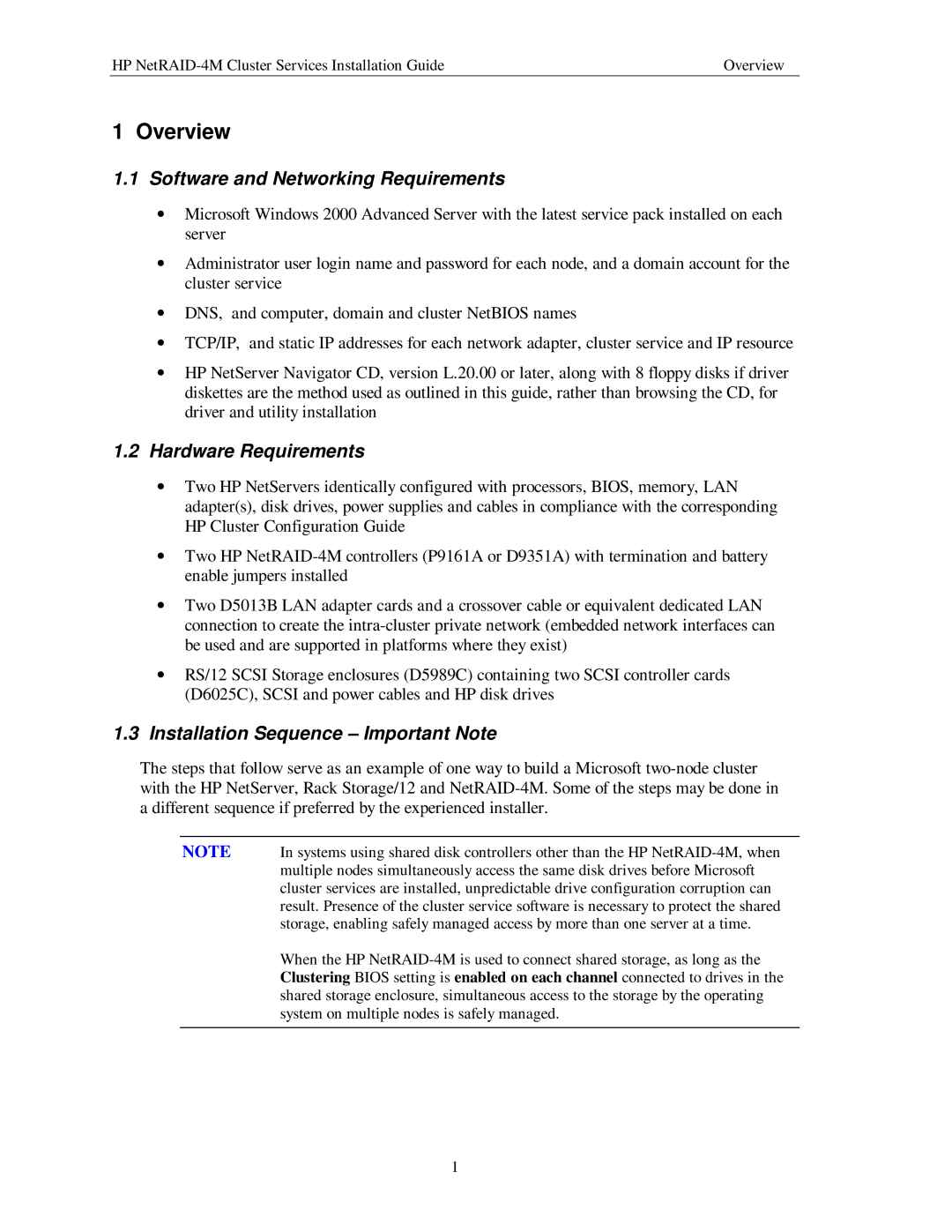
HP | Overview |
1 Overview
1.1Software and Networking Requirements
∙Microsoft Windows 2000 Advanced Server with the latest service pack installed on each server
∙Administrator user login name and password for each node, and a domain account for the cluster service
∙DNS, and computer, domain and cluster NetBIOS names
∙TCP/IP, and static IP addresses for each network adapter, cluster service and IP resource
∙HP NetServer Navigator CD, version L.20.00 or later, along with 8 floppy disks if driver diskettes are the method used as outlined in this guide, rather than browsing the CD, for driver and utility installation
1.2Hardware Requirements
∙Two HP NetServers identically configured with processors, BIOS, memory, LAN adapter(s), disk drives, power supplies and cables in compliance with the corresponding HP Cluster Configuration Guide
∙Two HP
∙Two D5013B LAN adapter cards and a crossover cable or equivalent dedicated LAN connection to create the
∙RS/12 SCSI Storage enclosures (D5989C) containing two SCSI controller cards (D6025C), SCSI and power cables and HP disk drives
1.3Installation Sequence – Important Note
The steps that follow serve as an example of one way to build a Microsoft
NOTE In systems using shared disk controllers other than the HP
When the HP
1
